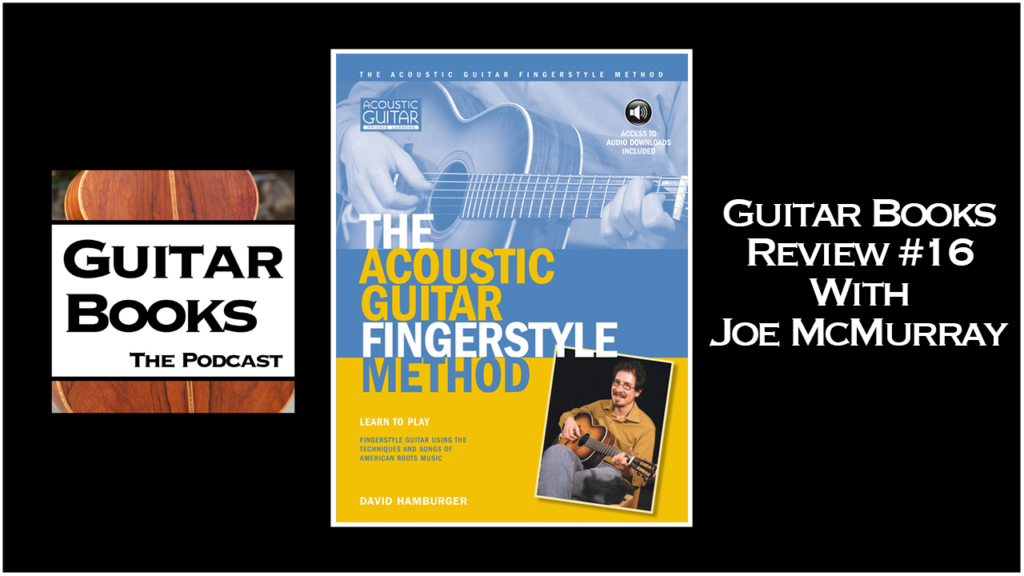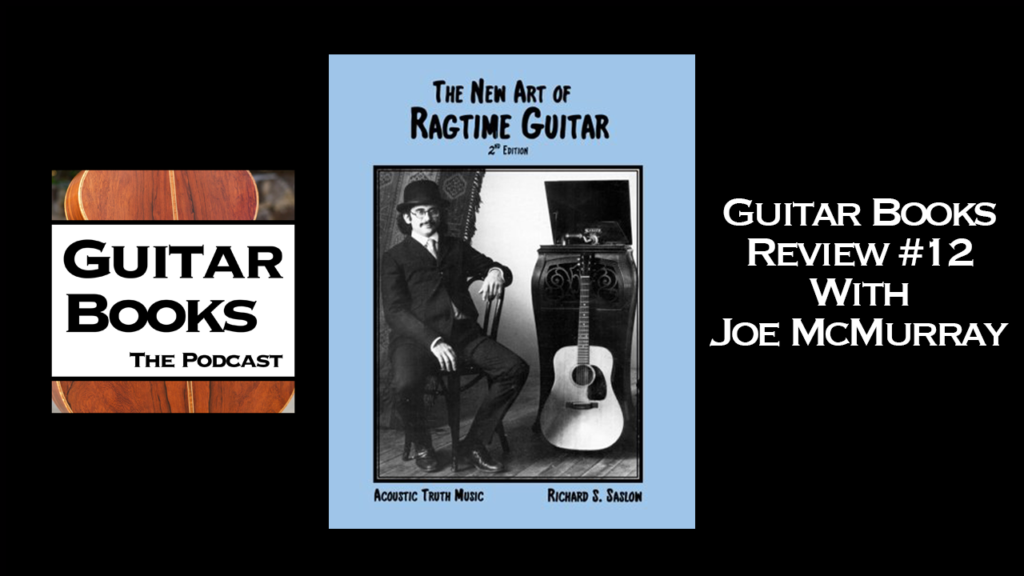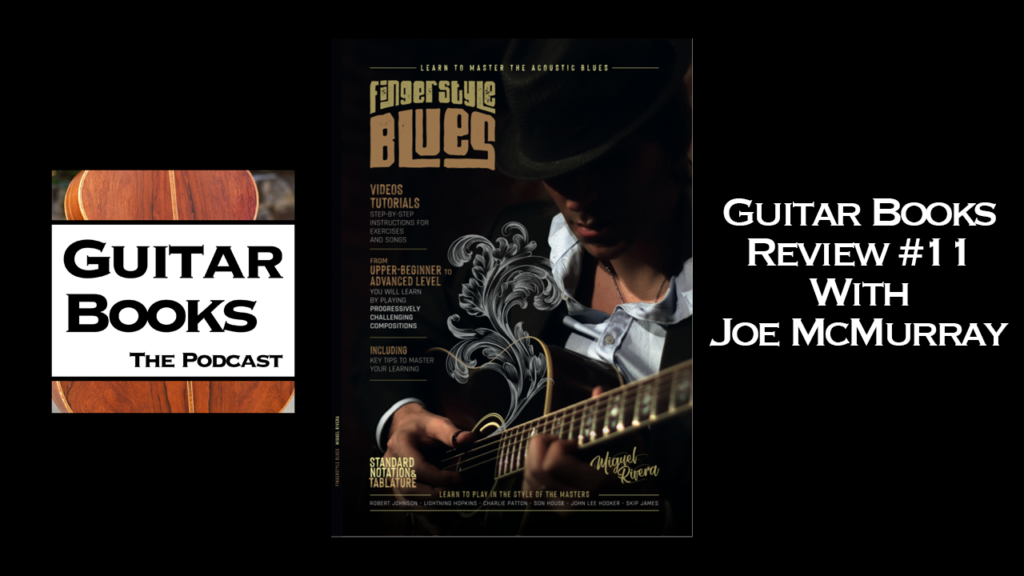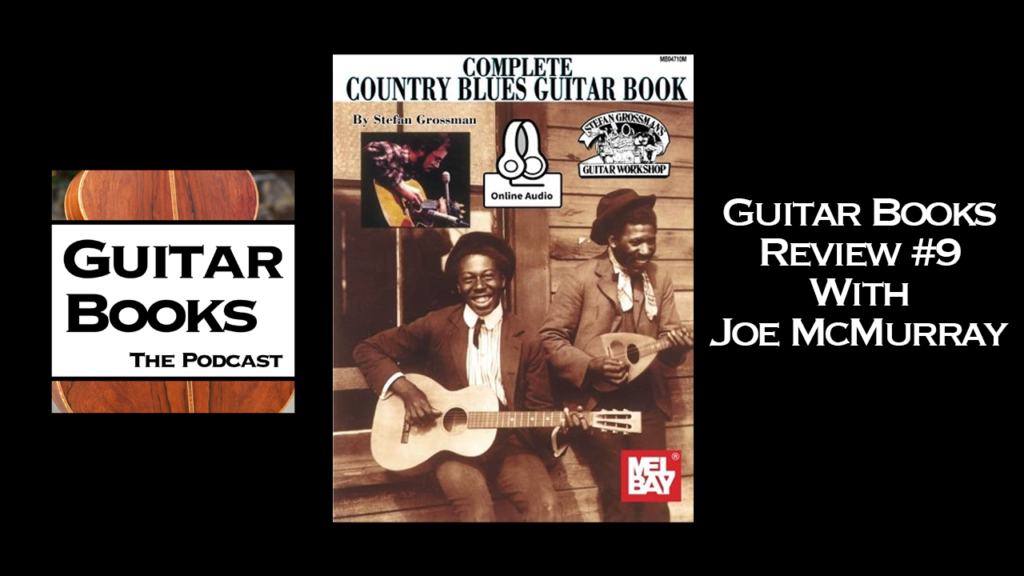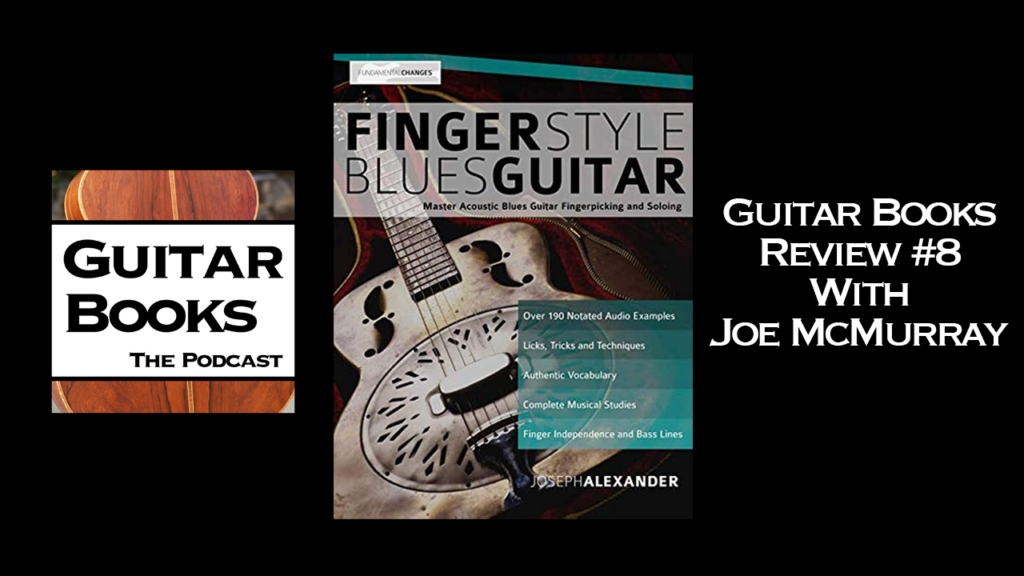Podcast: Play in new window | Download (Duration: 18:11 — 25.1MB) | Embed
Subscribe: Apple Podcasts | RSS | More

If you want to get started playing acoustic fingerstyle guitar, you will benefit from private lessons with a teacher, online video courses, listening to fingerstyle recordings, and of course… books. It is beneficial to mix and match all of these resources. Remember that everyone’s brain works differently, so you may gravitate more towards certain styles of learning / methods of presentation. I love learning from books because I can read the text at my own pace and as many times over as I want. Seeing the music written out is extremely helpful for me – I always had more difficulty keeping track of song forms or chord progressions without some sort of written reference.
So, for those of you who want to utilize a fingerstyle guitar method book to beef up your chops, I’ve done my homework and I’ve distilled my favorites into this “greatest hits” list. I’ll try to be objective and describe who each book is best suited to.
Best Beginner Fingerstyle Methods:
- Alfred’s Beginning Fingerstyle Guitar (Lou Manzi): Great all-around book to learn solo fingerstyle guitar. Beginner to intermediate. Not specific to any one subgenre of fingerstyle. Nice organization/flow of information with a decent difficulty progression. Good finger exercises to build some dexterity or to use as warmups, decent explanations in the text (but not too wordy), and nice sounding original tunes. There aren’t any arrangements of famous tunes, but there are tunes “in the style of ___.” I personally like working through this book with my students. Additionally, many of this book’s lessons have sparked creative ideas of my own. First book in a three part series, so you can continue your studies! Audio recordings are available.
- Travis-Style Guitar from Scratch (Bruce Emery): This book is a gem! This is a method book for learning to play solo fingerstyle guitar using an alternating bass (in the Travis style). This is one of the best books I’ve found for complete beginner to intermediate players who want to learn this specific style. Even if you want to play other sub-styles of fingerstyle as well, this isn’t a bad place to start your journey. The material progresses logically with lots of exercises that build on each other and lead perfectly into performance pieces (old classics like Oh! Susanna, House of the Rising Sun, Jingle Bells, etc.). Each time Emery presents a new concept, he incorporates it into updated arrangements of each tune. Emery’s sense of humor is infused into the text of the book, keeping detailed explanations lighthearted and entertaining without losing sight of the important information. Audio recordings are available.
- Fingerstyle Guitar from Scratch (Bruce Emery): I don’t love it as much as Travis-Style Guitar from Scratch, but it is still great general method book. You will not learn to play solo fingerstyle guitar arrangements (other than a very brief introduction to the topic), but you will receive a great foundation if you are just starting out with fingerstyle. Complete beginner to intermediate. Emery’s sense of humor is once again infused into the text of the book, keeping detailed explanations lighthearted and entertaining without losing sight of the important information. The book is focused on fingerstyle accompaniment using arpeggiation and Travis Style / alternating bass patterns. This book would make an excellent primer for either Alfred’s Beginning Fingerstyle Guitar or any other fingerstyle guitar method. Audio recordings are available.
- Hal Leonard’s Fingerpicking Guitar (Doug Boduch): Short and sweet method to learn to play accompaniment and solo fingerstyle guitar through famous popular tunes. Beginner to intermediate. Guitar teachers may find this book to be a great teaching supplement. The progression of topics is well laid out, the examples and arrangements are playable and sound good, and the text is concise. This book is great if you just want to play arrangements of popular tunes, but I’d recommend that you work with a teacher if you want to learn more about how to apply the information outside the book. Audio recordings are available. Don’t confuse this with the next book.
- Hal Leonard’s Fingerstyle Guitar (Chad Johnson): Not to be confused with the previous book, this book is a more in-depth method for learning to play both accompaniment and solo fingerstyle guitar. Beginner to late-intermediate. I love the chapter on arranging music for fingerstyle guitar. There are lots of popular songs – either short samples of the accompaniment parts or full solo instrumental arrangements. Lots of examples, although they don’t always build on each other very well, creating some tough swings in difficulty. Audio recordings are available. I’d recommend Alfred’s Beginning Fingerstyle Guitar over this book unless you specifically want the popular song arrangements.
- Mel Bay’s Complete Chet Atkins Guitar Method (Chet Atkins): Excellent method book aimed at beginner and intermediate guitar players who want to learn to play solo fingerstyle guitar arrangements in the style of Chet Atkins (the majority of which utilize an alternating bass/ Travis Style). If you are interested in this country-blues style of playing that Chet Atkins made popular starting in the 1950s and lasting until his death in 2001, this is a great place to start. This book ranges in difficulty from easy to intermediate, although a few of the final arrangements are fairly difficult. This one is moves faster and gets significantly more difficult than Bruce Emery’s Travis-Style Guitar from Scratch. I’d really recommend going through Emery’s book first and then tackling this one if you are primarily interested in solo Travis Style playing. This book is arranged much differently from Emery’s book. Each section focuses on playing in a new key signature, and each new key presents new challenges and new opportunities. This book also gets you playing up the neck (but don’t be in a rush to play up the neck!).
